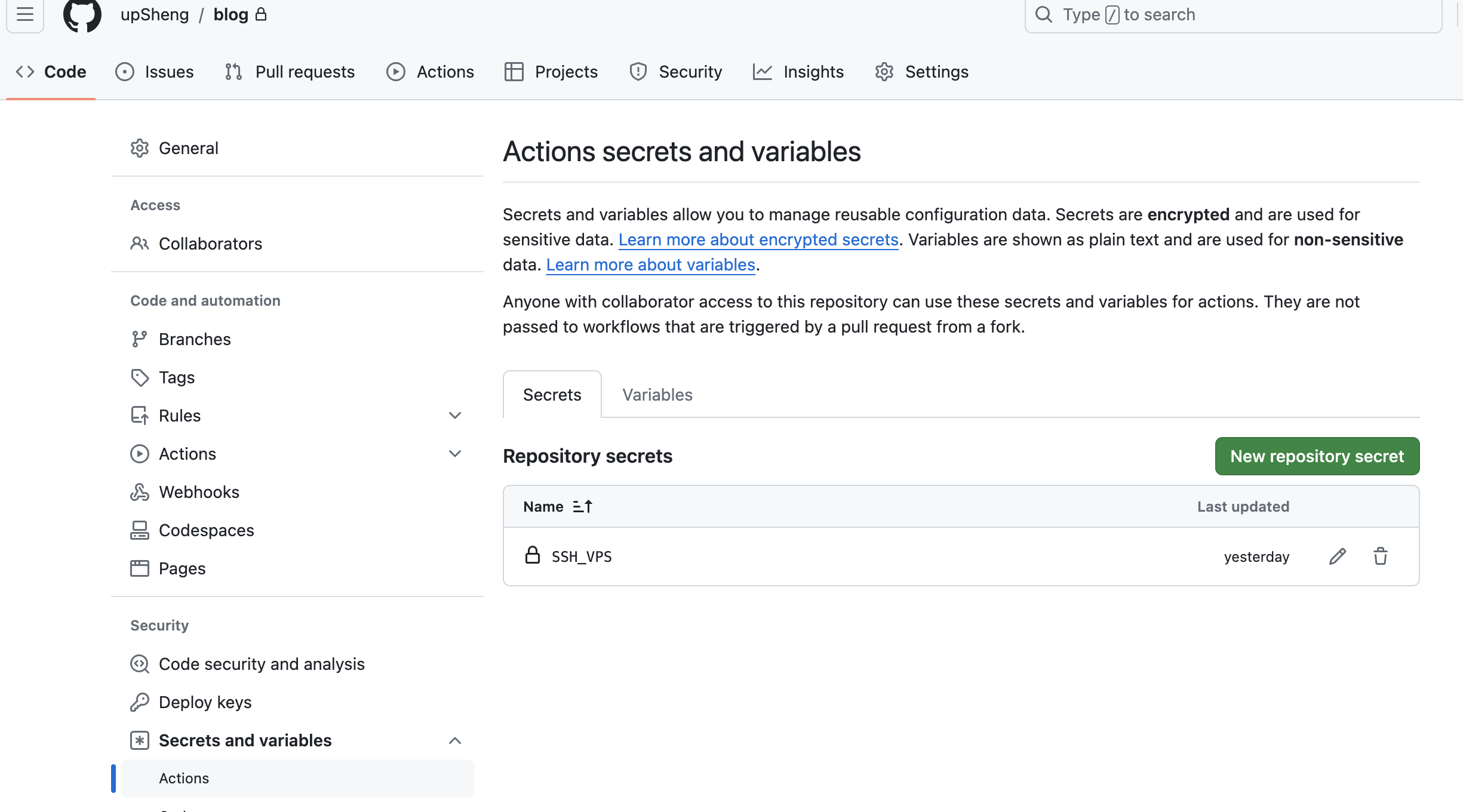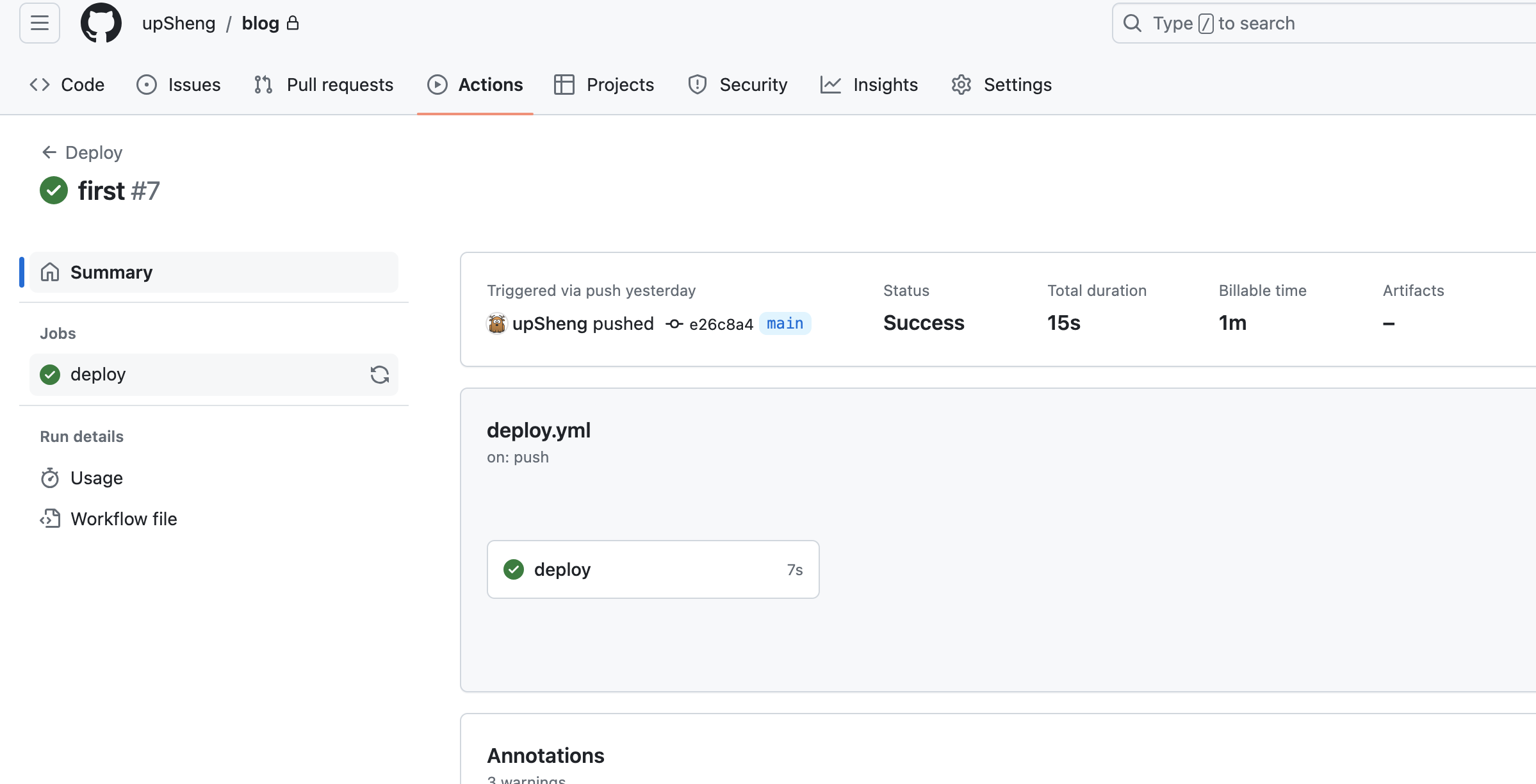前面使用hugo生成了静态网站,public下的一堆文件,需要放到web服务器下
每次新写博客都要同步
github action
可以将本地生成的public目录提交到github仓库
你的服务器拉取github仓库,执行脚本部署
当你提交文件时可以使用 action自动触发脚本运行部署
在服务器运行生成公私密钥
ssh-keygen -t ed25519 -C "your_email@example.com"
github新建一个blog仓库,把私钥存成一个变量,这样github action可以通过ssh在你服务器运行脚本
在setting -》secrets and variables -》action 添加ssh 变量,让github action可以通过ssh执行脚本

仓库根目录新建action脚本
.github/workflows/deploy.yml
${{secrets.SSH_VPS}} 需要换成你自己定义的变量名
name: Deploy to server 下面是你想要运行的脚本,可以自定义
name: Deploy
on:
push:
branches:
- main # 监听主分支的推送事件
jobs:
deploy:
runs-on: ubuntu-latest
steps:
- name: Checkout code
uses: actions/checkout@v2
- name: Setup SSH
uses: webfactory/ssh-agent@v0.5.3
with:
ssh-private-key: ${{ secrets.SSH_VPS }}
- name: Deploy to server
run: |
ssh -o StrictHostKeyChecking=no root@chenhs.xyz '
cd /data/upsheng/blog && \
git pull && \
/data/upsheng/deploy-script.sh'
当你提交时 action标签也会有意向构建信息

本地hugo自动提交脚本
#!/bin/bash
echo -e "\033[0;32mDeploying updates to GitHub...\033[0m"
# Build the project.
hugo # if using a theme, replace with `hugo -t <YOURTHEME>`
# Go To Public folder
cd public
# Add changes to git.
git add .
# Commit changes.
msg="rebuilding site `date`"
if [ $# -eq 1 ]
then msg="$1"
fi
git commit -m "$msg"
# Push source and build repos.
git push -u origin
# Come Back up to the Project Root
cd ..
nginx
web服务器采用nginx
# 安装nginx
yum install nginx
# 查看nginx状态
systemctl status nginx
# 重启
systemctl restart nginx
# 停止
systemctl stop nginx
编辑 nginx.conf 配置
设置root地址为 hugo生成的public目录地址就好了
server {
listen 80;
listen [::]:80;
server_name chenhs.xyz www.chenhs.xyz;
root /data/upsheng/blog/public;
# Load configuration files for the default server block.
include /etc/nginx/default.d/*.conf;
error_page 404 /404.html;
location = /404.html {
}
error_page 500 502 503 504 /50x.html;
location = /50x.html {
}
}